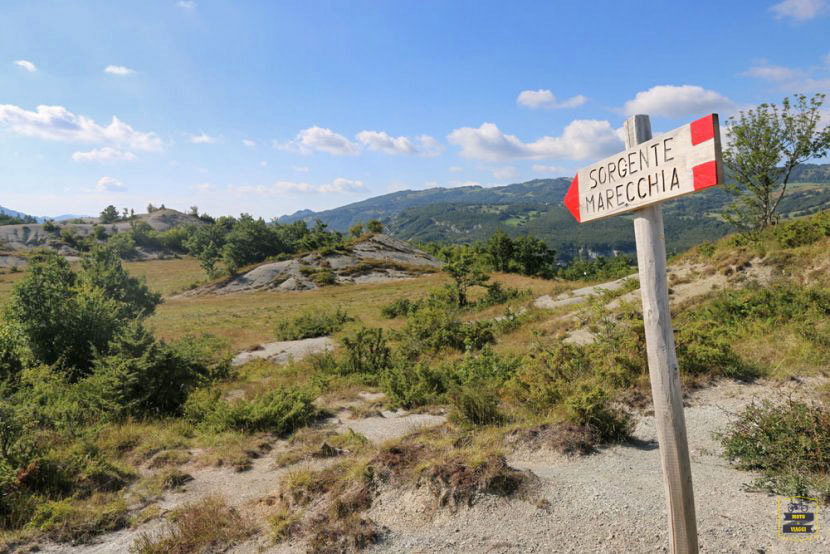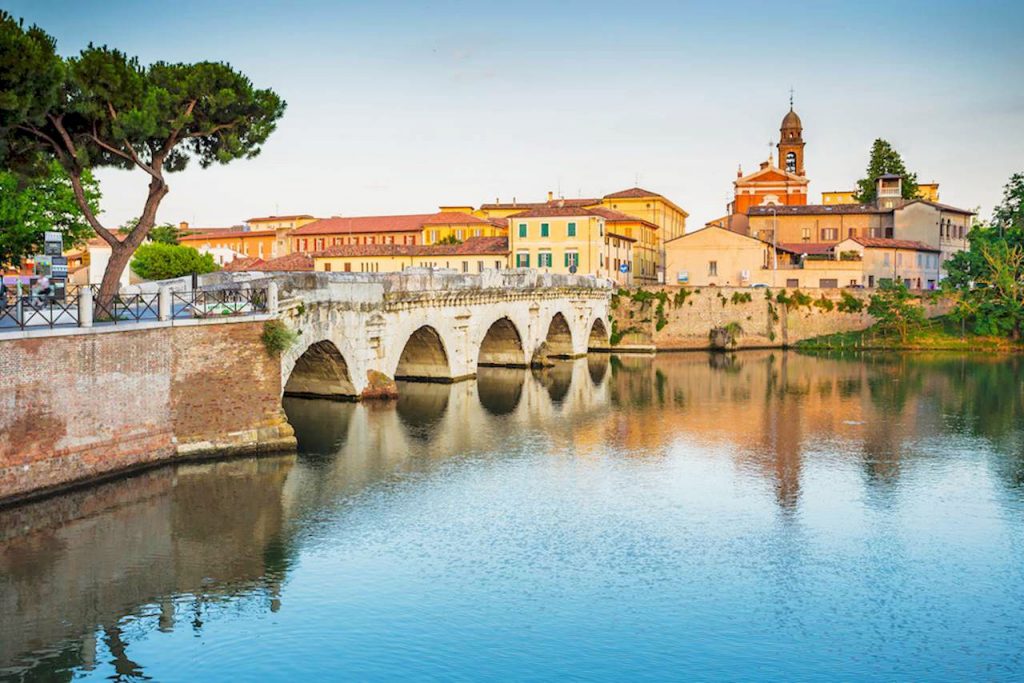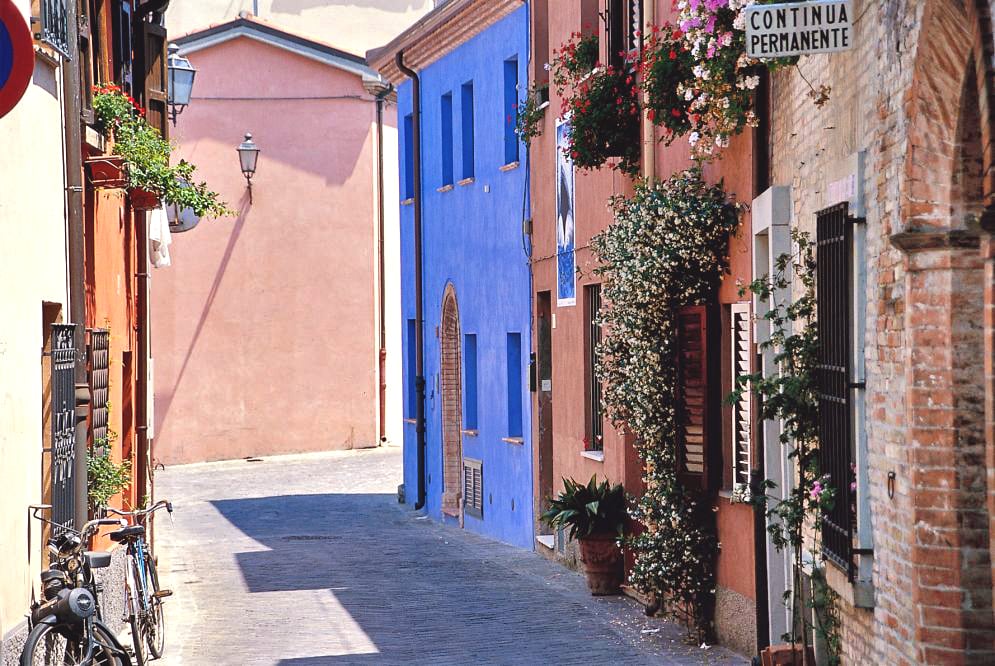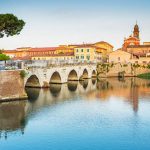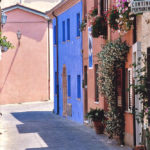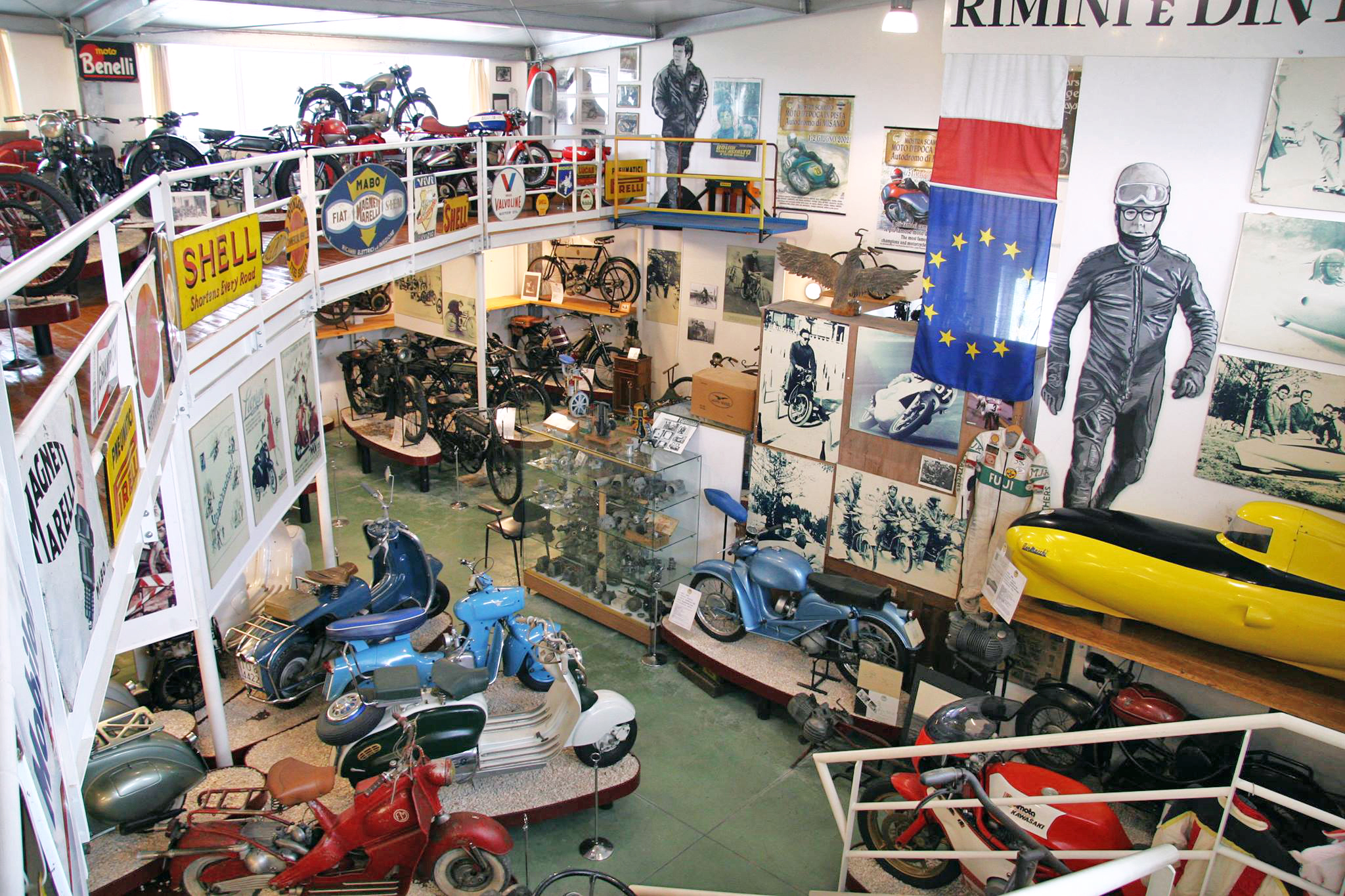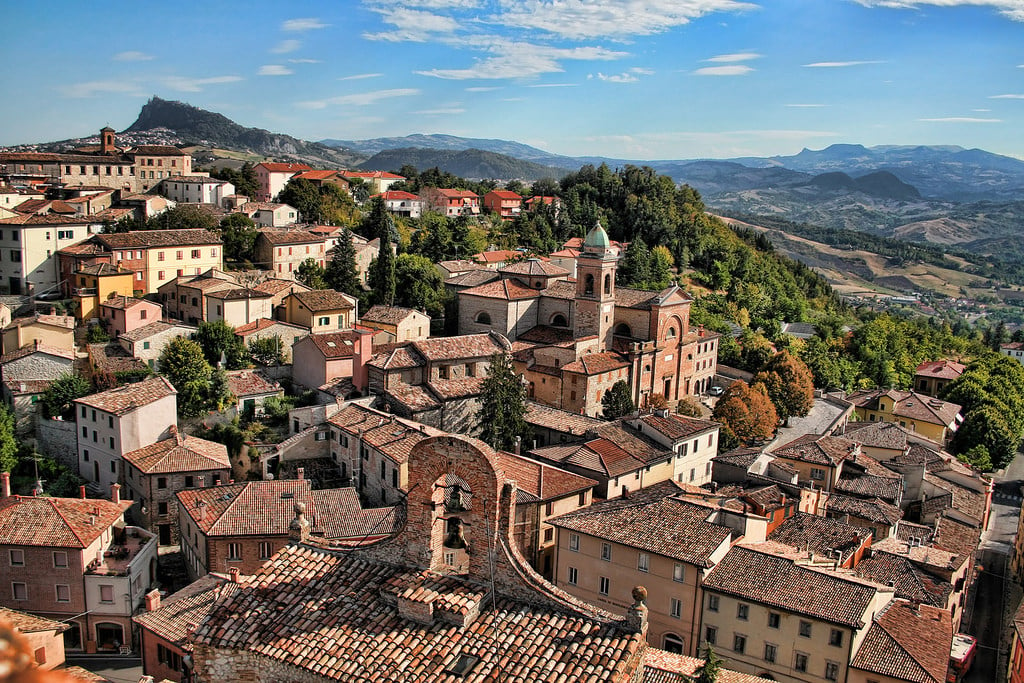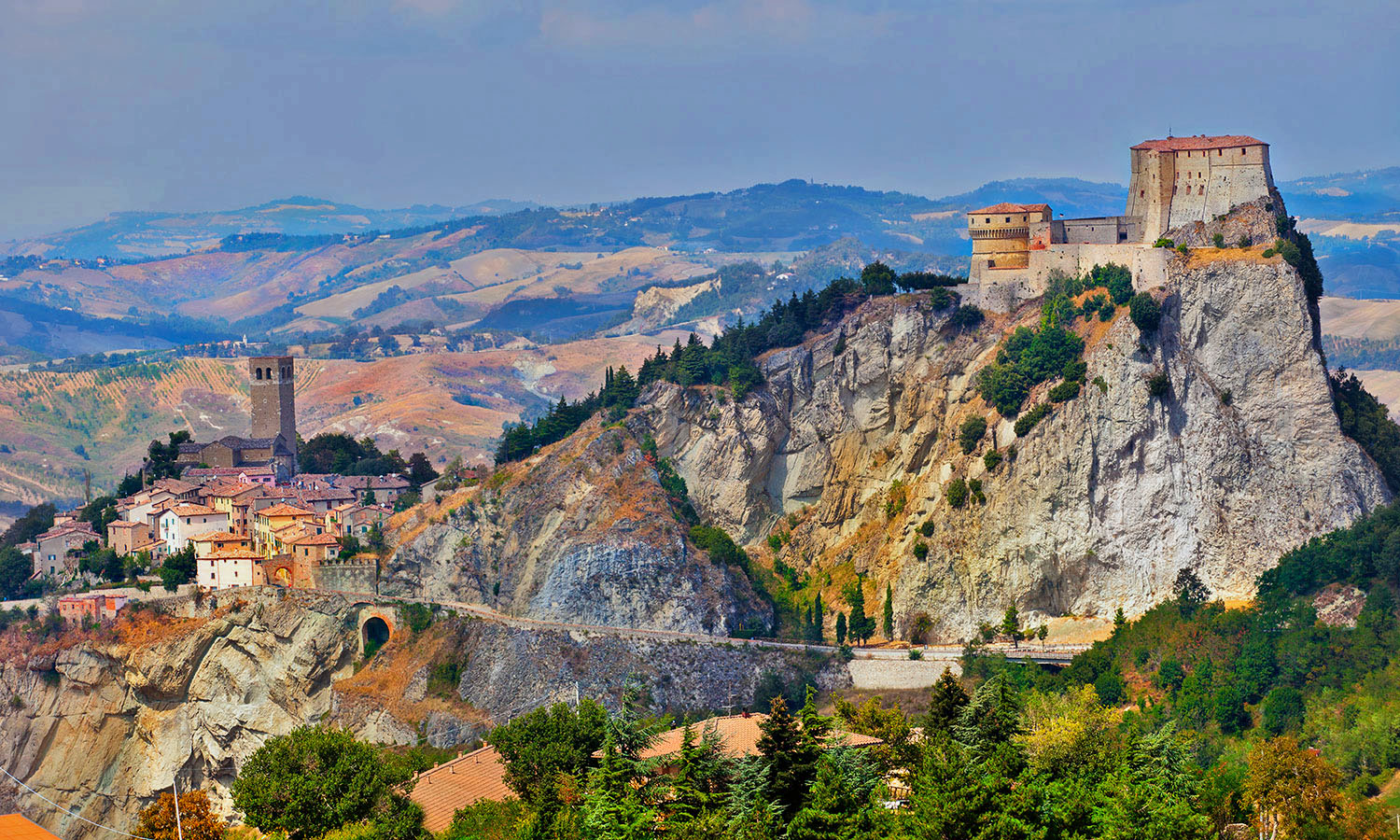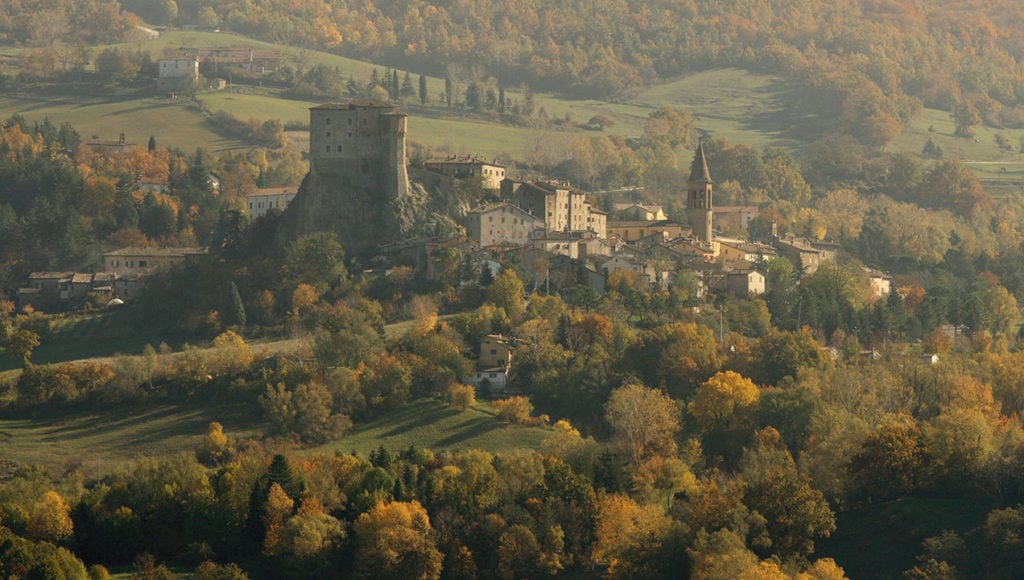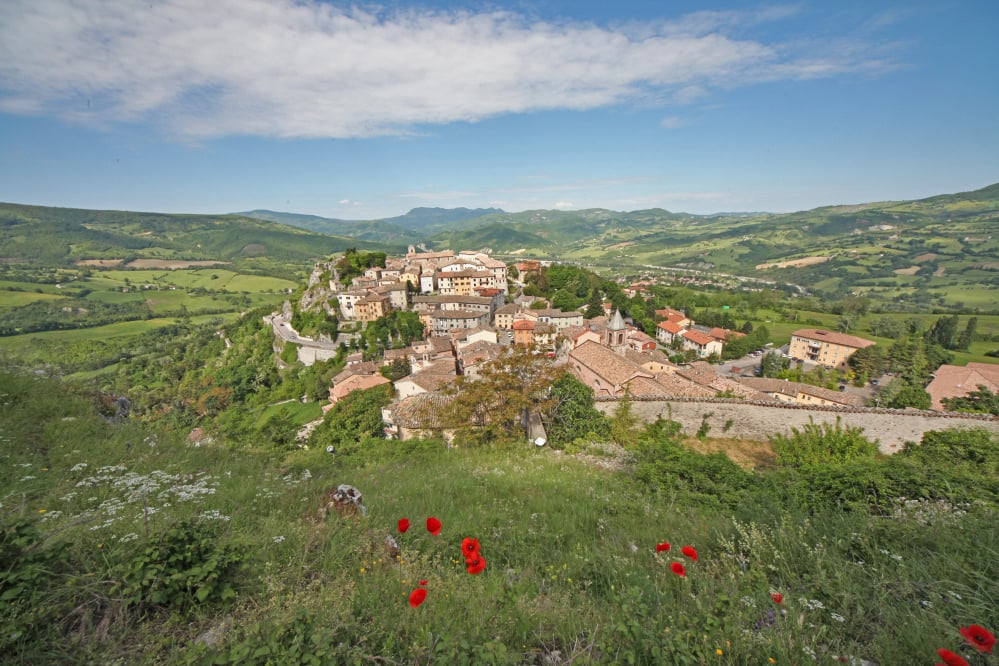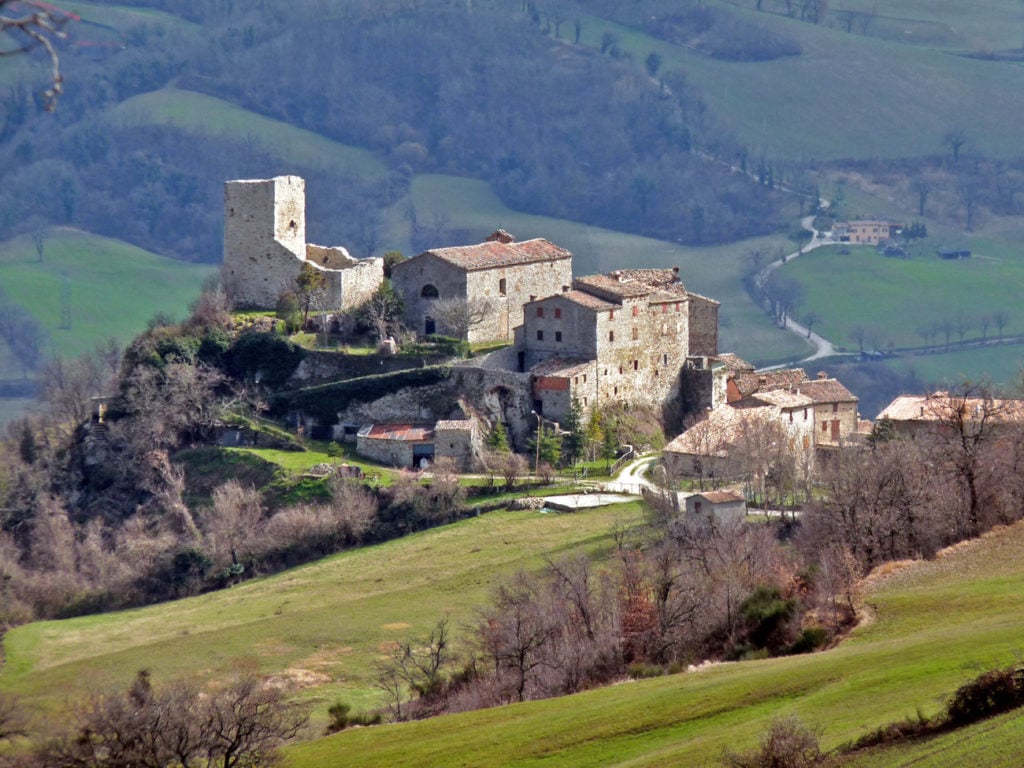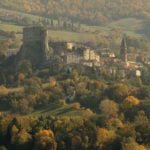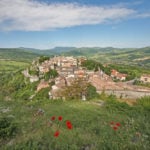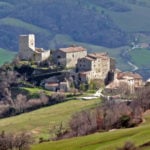After our journey through the Po Delta Natural Park – State Street 16 Adriatica, Cervia’s salt mines, Ravenna’s mosaics, Ferrara’s gastronomy and the impressive valleys of Comacchio – today we are shifting a little bit Southern for a new great tour on two wheels through the Emilia-Romagna.
Discovering Valmarecchia in motorcycles | Via Moto e Viaggi
From Rimini, we will explore the Marecchia valley, crossing the Southern tip of the region, towards the Montefeltro, Tiberina valley and finally Urbino. A sinuous itinerary among the gentle green hills of the area, that will touch some of the most important art cities that played a key role in the history of medieval-to-Renaissance Northern Italy. Are you ready?
Duration: two days / one week depending on you decide to stop in the art cities
Length: 260km
When: spring, summer, and early autumn
Despite being quite sleepy, we decide to get up early to explore Rimini until it’s not invaded by the traffic. Following the directions for the village of San Giuliano (the northern outskirts of Rimini), we drive along the seafront at 40km/h, while the sun is rising and some fishermen leave the harbour. On the bank of river Marecchia, this neighborhood preserves its popular character untouched. The narrow streets and the inner squares look amazingly romantic with the light of dawn.
In awe and astonishment, we cross the river Marecchia on the Bridge of Tiberius, built by the Romans over 2000 years ago. The Roman traces of Rimini do not end here, and we circumnavigate the city centre in order to reach the Triumphant Arch of Augustus, erected in 27 BC at the far end of the Via Flaminia.
It’s time to hit the gas for us, so we take the Via Flaminia and after 12 km we reach the first stage of our journey, the National Museum of Motorcycle. It was built in 1993 and preserves over 250 models of 55 brands, plus a specialized library. The museum is not excessively big, but we take our time to visit it.
National Motorcycle Museum of Rimini
We then proceed to explore the hinterland and along the SS258 (known as Marecchiese or Via Tiberina) we drive towards Verucchio, that dominates the valley right under San Marino. It’s a pleasure for a biker to drive through this streets, it’s a smooth ride, but not very fast, considering the villages all along the way. From the top of the hill, the panorama is stunning: a full view of the valley up to the coast.
Verucchio | Photo @ Pilù.2008, via Flickr
After some kilometers along the SP258, we arrive in the village of San Leo, one of the most impressive villages of the entire province thanks to its imposing position and to the fortress on its top, nearly impossible to reach. Parking the bike aside, we visit the inner part of the fortress, where once Felice Orsini and the famous Count of Cagliostro were imprisoned.
After the visit, it’s time for lunch with a delicious plate of tagliatelle, and we plan a second pause in Novafeltria for a coffee. From San Leo, we continue on the street passing by the convent of Sant’Igne and then take the SP258 again. Among the villages of the area, Novafeltria is definitely worth a visit, with its medieval monuments and ancient forests on the top of mount Monte Pincio.
San Leo (Rimini) | Photo ©hotelmonica
There’s still a long way to go and we want to reach Sansepolcro by the end of the day, so we can’t afford any more pauses, just a quick rest to take some photos of the nearby villages and fortresses: the natural park of Sasso Simone and Simonello, Sant’Agata Feltria, Pennabili, Petrella Guidi…the curves of river Marecchia lead us to Tuscany in Badia Tedalda, at the border with Romagna and Marche.
The track becomes more and more exciting as the difficulty and the height of the hill increase. The many chicanes and the beauty of the territory are one of the main reasons why bikers love to take this road. In fact, we meet many of them having a rest at passage Passo di Viamaggio at the local restaurant. From here, the road downhill is a feast for accelerators, and it ends with a panoramic view over Tuscany’s Valtiberina and Montedoglio lake.
Our evening stop is Renaissance village Sansepolcro, home-town of painter Piero Della Francesca, who drew marvellous frescoes capable of moving the hardest heart of stone. We are staying here for the night, tomorrow we will visit the city in no hurry. The territory offers a variety of isolated churches, medieval villages, and gentle slopes, that Piero Della Francesca admired and portrayed during his pilgrimages in Central Italy.
The following day, after a stop in Anghiari and Arezzo, we are ready to go home. The state street SS73 bis (called Senese-Aretina) is a continuum of curves, especially at the passage of Bocca Trabaria*, 1049 m asl. From here, we reach first Urbania, then Urbino, whose centre has been declared Unesco World Heritage Site thanks to its historical brick constructions.
The trip is now over or maybe not…
* For work in progress the passage of Bocca Trabaria is currently closed. We recommend taking the state street SS73 (called Senese Aretina) until Pitigliano. From there take the Provincial Road 200 up to Mercatello Sul Metauro, and then continue towards Urbania.
Author

Davide Marino
Davide Marino was born archaeologist but ended up doing other things. Rational – but not methodic, slow – but passionate. A young enthusiast with grey hair
